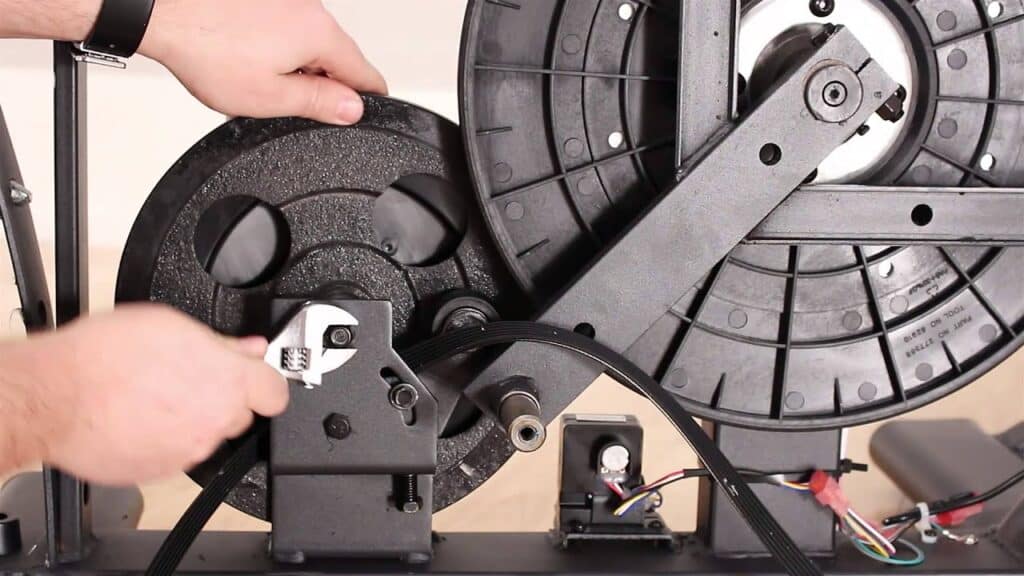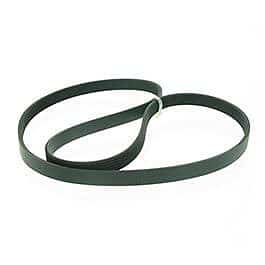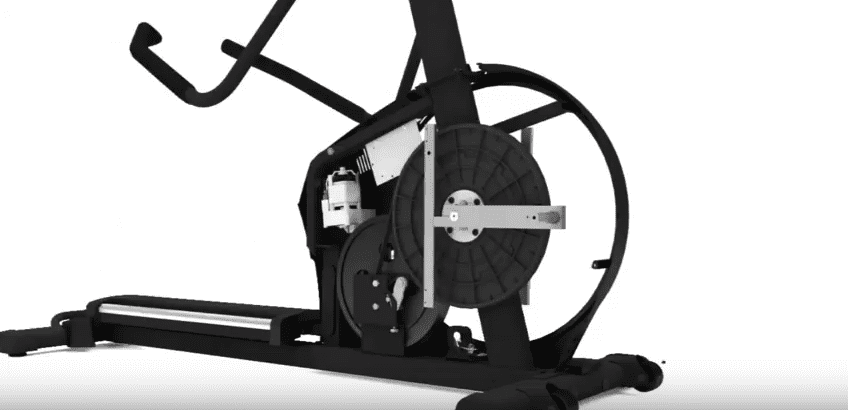Elliptical Drive Belt Replacement
Imagine this: you’re working out on your elliptical like normal when all of a sudden you hear a snap and a crash, and the machine stops working. The drive belt has broken.
While this is not a common occurrence, it is a possibility, and there are often no warning signs before it happens. Over time, drive belts can wear down, dry out, and crack. Eventually, they will break.
Unless you use even the best cross trainer several hours a day, seven days a week, you do not need to worry about replacing the elliptical drive belt for about seven years. However, if you want to avoid a snapped elliptical belt and possible damage to the machine, change your drive belt every five to seven years.
While issues like this may seem daunting, especially if you are not a mechanic, elliptical belt replacement is incredibly easy.
What Does the Elliptical Drive Belt Do?
The purpose of any drive belt, whether its front or rear is to transmit force between a powered pulley and a non-powered pulley. This often takes the form of a small powered wheel and a larger non-powered wheel connected by the drive belt.
The exchange of force is usually used to reduce the output speed coming from the motor. If the little wheel is turning quickly, it can get through several rotations before the big wheel finishes one.
We find the same concept at work in vehicles and machines. Think of your bike.
There are two sets of gears, big and small. By changing the gear ratio and size, you can either go slower with more power or faster with fewer rotations.
Drive belts work the same way in ellipticals. There is a large and small wheel.
The resistance motor powers the small wheel, and the big wheel connects to the roller arms. When you set the speed or resistance, you tell the machine how hard you need to push to keep up the rotation.
In the case of ellipticals, you cannot move your legs as fast as the small wheel turns, so the drive belt is in place to reduce the speed of the larger wheel.

How do you change the belt on an elliptical?
Replacing the drive belt on an elliptical is a much more straightforward process than you may expect. There are only three tools required, and though there are many steps to the process, most of them are just to get to the drive belt.
Here is the step-by-step process you will need to change out your elliptical drive belt and put it back together.
Elliptical Tension Belt Replacement
Required Tools
To replace the elliptical drive belt, you will need:
- A flathead screwdriver
- An Allen key
- A wrench
- A new drive belt
Sometimes ellipticals tend to have more than one Allen key bolt size so its handy to have a few options available:
Step-by-Step Process
- Remove the casings.
- Using the flathead screwdriver, pop off the plastic casing from the top right-hand axle.
- Unscrew the underside casing.
- Dismount the roller arms.
- Using the Allen key, unscrew the screw and washer from the axel.
- Use the Allen key to remove the screw and cover from the roller arm.
- Remove the entire roller arm.
- Repeat on the left side.
- Remove housings.
- Unhook the shield cover cap and slide it upwards.
- Remove the shield cover.
- Take off disk covers.
- Use the screwdriver again to pop off the disk covers.
- Remove side shields.
- Unscrew the side shields and remove them.
- Loosen drive belt.
- Using the wrench, loosen the pivot bolt and adjustment bolt to release tension from the drive belt.
- Rotate the larger wheel slowly as you remove the belt to walk it off easily.
- Leave it where it lands for now.
- Release eddy mechanism.
- Use the screwdriver to press down on the end of the resistance cable in the eddy mechanism (the smaller wheel) to release tension.
- Unwind and remove the cable from the resistance motor.
- Loosen the lock nut from the eddy mechanism and remove the eddy mechanism.
- Change out the drive belt.

- With the eddy mechanism out of the way, remove the old drive belt and insert the new one in its place.
- Follow all steps in reverse.
- Return the eddy mechanism to its place and tighten the lock nut.
- Walk the drive belt back into place.
- Tighten the tension bolts.
- Reconnect the resistance cable.
- Replace the side shields, shield cover, shield cover cap, and disk covers.
- Replace the roller arms and return all screws into place.
- Reattach the final covers, and you’re done.
For a visual example, follow check out this video:
Common Problems: Why is My Elliptical Belt Slipping
The most likely cause behind an elliptical belt slipping is that the tension is too loose. If the drive belt is not held flat against the wheels, it can shift and slip over time. If it is really loose, it may even come off.
Follow the above steps until you finish step five. Once you have access to the inner workings, tighten the pivot bolt and adjustment bolt until the drive belt feels secure. Your machine probably indicates in the instructions how tight the drive belt should be.
How tight should the elliptical drive belt be?

The belt should be tight enough that you cannot shift it or get your fingers under it but loose enough that it is not unreasonably stretched.
If you encounter other common problems such as elliptical squeaking, you may need to oil your machine. Check while replacing the drive belt so that you don’t have to open it up again. The axels are the likely culprits behind squeaking.
Elliptical Belt
The elliptical belt sometimes has sticky feeling rotations, squeaking any other issues may be due to tension issues with the drive belt or resistance motor. Consult your machine’s instructions before making any changes.

Elliptical Machine Keeps Coming off Track
Typically the reason the elliptical machine goes off track is due to alignment. You can fix this by loosening the bolt on the pedal arm.
Alternatively, if this doesn’t work you can unhook the pedal arm from the disc to see if the disc spins, if the disc doesn’t spin then unfortunately you need to replace the crank arm. This is common if the machine has been owned for a long period of time and over time the crank arm bends. This part of the machine tends to be put under a lot of stress when in operation.
NordicTrack Elliptical Belt Replacement
To replace the belt on a NordicTrack Elliptical you can follow the same steps as above. Generally, regardless of the machine it is the same procedure, but the location of the parts may differ.
Here is a handy video on replacing the drive belt specifically for a NordicTrack Elliptical:
As you can see, NordicTrack elliptical replacement is very similar if not the same as most elliptical drive belts.
Cross Trainer Belt
Changing a cross trainer belt is often a simple matter. So long as you follow the instructions to a tee and ensure tensioning is correct, elliptical drive belts are an easy fix.
The drive belt is there to regulate the speed and resistance of the elliptical. If it is too loose, it may slip. If it breaks completely, the machine will stop working.
To ensure your elliptical has a long life, prioritise the elliptical belt replacement, set the tension correctly, and oil the inner mechanics occasionally.
An ex-triathlete, fitness coach and writer with a Masters in Sports Physiology. Fitness is my passion and I've had my fair share of home fitness equipment tried and tested!




One Comment